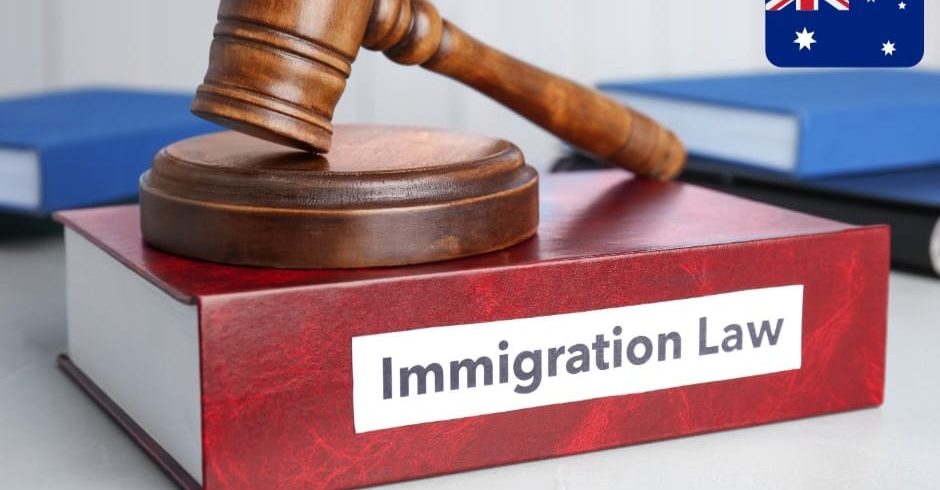
When Jawad came to Australia without a valid visa in 2013, his son Ali was only a few months old. Like many other temporary protection visa holders, Jawad had been watching his son grow through the mobile screen, and whenever Ali asked his father, when will we meet you? Jawad replied that he does not know but hopefully soon.
Temporary protection visas have caused substantial human suffering, as noted in the Senate Legal and Constitutional Affairs Committee’s 2006 Inquiry into the Administration and Operation of the Migration Act 1958 (Cth. Refugees with temporary protection are placed in a state of ongoing legal limbo, faced with the prospect that they might be sent back to a country where they fear persecution. Studies by mental health experts have found that refugees on TPVs experience higher levels of anxiety, depression and post-traumatic stress disorder when compared to permanent protection visa holders, despite similar backgrounds and experiences.
Finally, after years of waiting, on 13 February 2023, the Albanese Government announced that it would end the cruel and unnecessary policy of temporary protection. This means that those who already have a Temporary Protection Visa (TPV) or Safe Haven Enterprise Visa (SHEV) will be able to apply for a permanent Resolution of Status (RoS) Visa.
With the end of Temporary Protection Visas, refugees who have been living in Australia for an extended period will now be eligible to apply for permanent residency. This change will provide greater security and stability to refugees who have made Australia their home and allow for individuals to fully participate in Australian society. Another positive outcome of the end of Temporary Protection Visas is the potential for increased family reunification. Under the previous system, refugees on Temporary Protection Visas faced significant barriers when trying to bring family members to Australia. The lack of a clear pathway to permanent residency made it difficult for individuals to meet eligibility criteria for family visas, and the lengthy processing times meant that many families were separated for years, if not decades.
The refugees now have an opportunity to apply for permanent residency and, in turn, sponsor their family members to come to Australia. This change will not only have a positive impact on the mental and physical well-being of refugees and their families but also contribute to the social and economic fabric of Australian society. However, the end of Temporary Protection Visas does not mean that the challenges facing refugees in Australia have been fully resolved. The processing times for permanent residency applications can be lengthy, leaving many refugees in a state of uncertainty and vulnerability as stated earlier. Additionally, the changes to the visa system do not address the structural inequalities that continue to perpetuate the marginalization and exclusion of refugees and other vulnerable groups.
The end of the Temporary Protection Visa program and the Safe Haven Enterprise Visa represents a significant step towards a more just and equitable system for refugees in Australia. The change offers increased security and stability to those who have made Australia their home and has the potential to reunite families who have been separated for years. However, much more work is needed to address the systemic inequalities that continue to impact refugees and other vulnerable groups and to ensure that all individuals have access to the rights and opportunities that they deserve.
Temporary Protection Visas (TPVs) and (SHEV)
Temporary Protection Visas (TPVs) and the Safe Haven Enterprise Visa (SHEV) are two visas available to asylum seekers who arrived in Australia without a valid visa. To be eligible for a TPV and SHEV a person, or a member of their family, must meet Australia’s protection obligations and meet all other visa requirements, such as health, character, identity, and security checks. The TPV was first introduced in Australia by the Howard Government in October 1999 and abolished by the Rudd Government in August 2008. Approximately 11,000 TPVs were issued between 1999 and 2007, and approximately 90 percent of TPV holders eventually gained permanent visas. On 5 December 2014, the Abbott Government reintroduced TPVs. TPVs can be granted for up to three years, and holders are entitled to work, study, and access government services such as Centrelink. However, TPV holders have no right to family reunification. In order to remain in Australia beyond the three-year period, the person must apply for a subsequent TPV or SHEV.
The Abbott Government announced the creation of SHEVs in September 2014. An applicant for a SHEV must be found to be in need of Australia’s protection and must intend to work or study in regional Australia. TPV holders have the opportunity to transition to a five-year SHEV if they agree to move to a regional area (defined in the Regulations) and engage in study at an approved institution (defined in the Regulations), or undertake work that means they are not reliant on income support for more than 18 months in the five-year period. There are concerns that SHEVs may not be a viable option for refugees with physical or mental disabilities, or who are unable to work, such as young adults or those who arrived in Australia as unaccompanied minors. Regional farming groups have also noted that seasonal farm work may not necessarily guarantee employment for SHEV holders.







It’s as if you read my mind; you seem to know so much about this that it’s as if you wrote the book in it or something. Although I believe a few images would help to drive home the point a bit more, this is an outstanding site. I will definitely be back.
Wow, superb blog format! How long have you been running a blog for?
you made running a blog look easy. The overall look of your web site
is great, as smartly as the content! You can see similar: sklep internetowy and here sklep internetowy